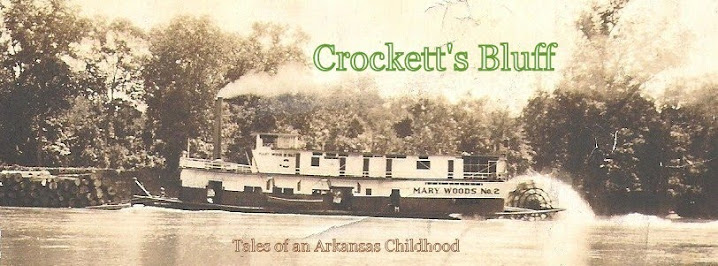According to my mother, when I was a small child in Crockett's Bluff in the late 1930s and somehow had the good fortune to find or to be given a much-valued Lincoln-faced penny, I would immediately ask if I could go "give it to Pete," the name everyone in the community used to refer to Adolph Prange, the proprietor of the Prange Store that sat adjacent to the Lutheran Church at the end of our lane. For me, it was the only store I knew until our family moved to DeWitt and then to Little Rock at the beginning of World War II.
When we returned to the Bluff in late 1945 the Prange family had moved to California, leaving their store closed and abandoned. The sole center of mercantile activity had shifted southward to Schwab's Store where it would remain for the next forty years until the retirement of Eddie and Thelma Schwab. Henceforth, I or anyone else in the Bluff with a penny to spend would have to give it to "Eddie or Doodle," as they were familiarly and affectionately addressed.
This picture was made in the summer of 1930 by Eddie Schwab with a Kodak box camera from the top of the Prange Farm water tower. The August Prange Farm Store (with it's gasoline pump) is the dominant structure at the lower right. A large section of the Schwab Store with its blacksmith shop at the rear can be seen at the center with the extensive gardens behind. The family house is among the trees.
The two trees between the two stores were persimmon. According to the notes made in her photo album by Thelma Schwab, the structures behind and to the left are the "Cellar" where potatoes, onions, canned vegetables and fruits, and even eggs were stored winter and summer. The last small building that can been seen is the chicken house. The Schwab family house cannot be seen for the trees. In clearer versions of this picture apparently Sebastian Schwab, the father of Eddie, has been noted as "the little guy going through the gate" when it was made. [Photo courtesy of Vicki and Derrall Gardner]






